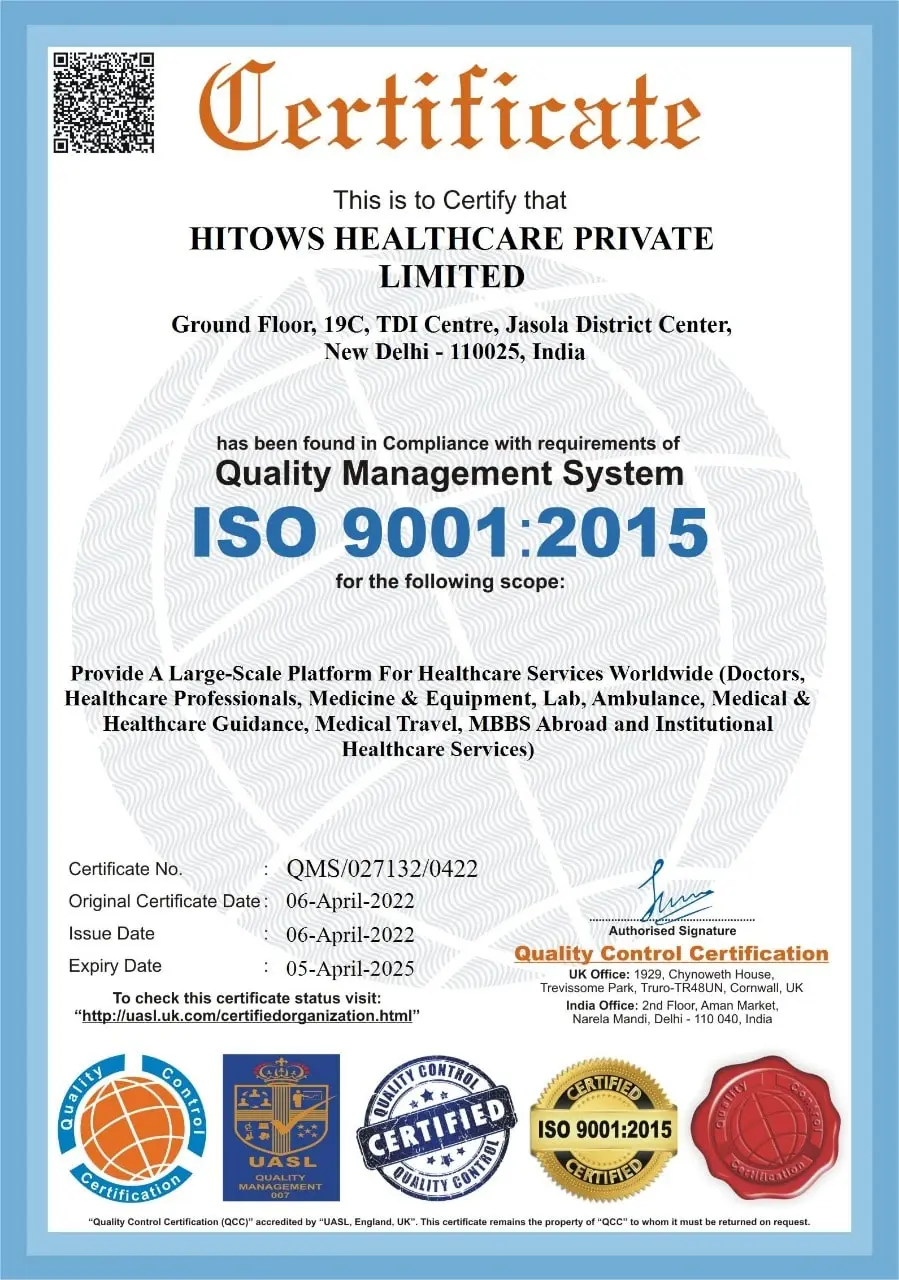EVAR (Endovascular aneurysm repair) cost in India
The cost of EVAR (Endovascular aneurysm repair)
in India ranges from USD 10000 to USD 17000
EVAR (Endovascular aneurysm repair):
Endovascular aneurysm repair (EVAR) is a minimally invasive treatment used to treat abdominal aortic aneurysms. The aorta is the major artery that transports blood from the heart to the rest of your body. EVAR employs small punctures and sophisticated equipment to repair bulges in blood vessels (aneurysms) found in the abdominal aorta.
Procedure Description:
EVAR (Endovascular aneurysm repair):
Endovascular aneurysm repair (EVAR) is a minimally invasive treatment used to treat abdominal aortic aneurysms. The aorta is the major artery that transports blood from the heart to the rest of your body. EVAR employs small punctures and sophisticated equipment to repair bulges in blood vessels (aneurysms) found in the abdominal aorta.
Disease Overview:
Abdominal aortic aneurysm (AAA)
An abdominal aortic aneurysm (AAA) is an expansion or bulging in the aorta that runs through your belly (abdominal aorta). The bulge arises in a place where the aorta's wall has weakened. Normally, your aorta's wall is strong and flexible enough to withstand the steady pressure of blood that your heart pumps out. However, aging, tobacco use, and certain medical problems can weaken the aortic wall. When the wall is weak, it cannot withstand the stresses of blood flow as effectively as it should.
Disease Signs and Symptoms:
Most AAA patients do not experience symptoms until the aneurysm is about to rupture. At that moment, you might have:
1- Consistent, deep pain in your lower back or abdomen.
2- Pain in the leg, groin, or pelvic region.
3- A pulsing sensation in your abdomen that seems like a heartbeat.
A ruptured AAA represents a medical emergency. Symptoms appear suddenly and may include:
1- Severe discomfort in the stomach, lower back, or legs.
2. Shortness of breath.
3- Rapid heartbeat.
4. Low blood pressure.
5. Dizziness or fainting.
6. Nausea or vomiting.
7. The skin is clammy and sweaty.
Disease Causes:
An AAA develops as a result of an underlying weakening in the aorta wall. Many environmental and inherited variables combine to generate this impairment. Overall, it's unclear why they form.
For example, tobacco use causes the aorta's wall to lose proteins that give it structure. This lowers its strength. Plaque development can potentially weaken the aorta's wall. Plaque formation and expansion over time can lead to inflammation and cell death in the arterial wall layers. As the building blocks of your aorta's wall degrade, the aorta weakens and becomes more susceptible to aberrant enlargement.
These risk factors play the largest impact in deciding who develops a AAA.
1. A history of tobacco use. Researchers describe this as smoking at least 100 cigarettes during your lifetime. Your risk varies depending on how much you use tobacco.
2. Older age. The chance of a AAA increases with age.
3. Sex at birth. People assigned male at birth are more likely to develop a AAA.
4- AAA family history. Family history is an essential factor in the development of AAAs. People with a first-degree relative who has a AAA are about 10% to 20% more likely to get one.
Disease Diagnosis:
Because AAAs seldom generate symptoms, healthcare providers frequently diagnose unruptured AAAs using testing ordered for other medical issues. If your provider suspects you have a AAA based on test findings or other criteria, they may perform:
1. Abdominal duplex ultrasound.
2. Computed tomography angiography.
For patients who are at risk of developing a AAA, healthcare experts recommend an ultrasound screening. This imaging test is straightforward and painless, and it determines whether you have a AAA. If you do, your doctor will recommend more ultrasounds at regular intervals (typically every six to twelve months) to check the aneurysm. If it becomes too large or you have other risk factors for aneurysm rupture, your doctor will propose surgery.
Disease Treatment:
The goal of abdominal aortic aneurysm treatment is to keep the aneurysm from rupturing. Treatment may include regular health examinations and imaging, known as medical monitoring or careful waiting.
2. Surgery.
Surgery to repair an abdominal aortic aneurysm is normally required if it measures 1.9 to 2.2 inches (4.8 to 5.6 centimeters) or more, or if it is rapidly expanding.
Repair surgery may also be indicated if you are experiencing stomach pain or have a leaking, sensitive, or painful aneurysm.
The sort of surgery performed is determined by the aneurysm's size and location, as well as your age and overall health.
Treatments for abdominal aortic aneurysms may include:
1. Endovascular repair. This therapy is commonly used to repair an abdominal aortic aneurysm. A surgeon inserts a small, flexible tube known as a catheter through an artery in the groin and guides it to the aorta. A metal mesh tube attached to the end of the catheter is implanted at the aneurysm site. The mesh tube, known as a graft, stretches and strengthens the weakest portion of the aorta. This helps to prevent the aneurysm from rupturing.
2- Endovascular surgery is not appropriate for everyone who has an abdominal aortic aneurysm. You and your healthcare team should talk about the best repair solution for you. Regular imaging examinations are performed following this treatment to ensure that the blood artery is not leaking.
Open surgery: This is a significant operation. A surgeon removes the diseased section of the aorta and replaces it with a graft that is stitched in place. Full healing could take a month or longer. Endovascular surgery and open surgery have similar long-term survival rates.
Country wise cost comparison for EVAR (Endovascular aneurysm repair):
| Country | Cost |
|---|---|
| India | $9990 |
| Iran | $3441 |
Treatment and Cost
19
Total Days
In Country
- 3 Day in Hospital
- 2 No. Travelers
- 16 Days Outside Hospital
Treatment cost starts from




